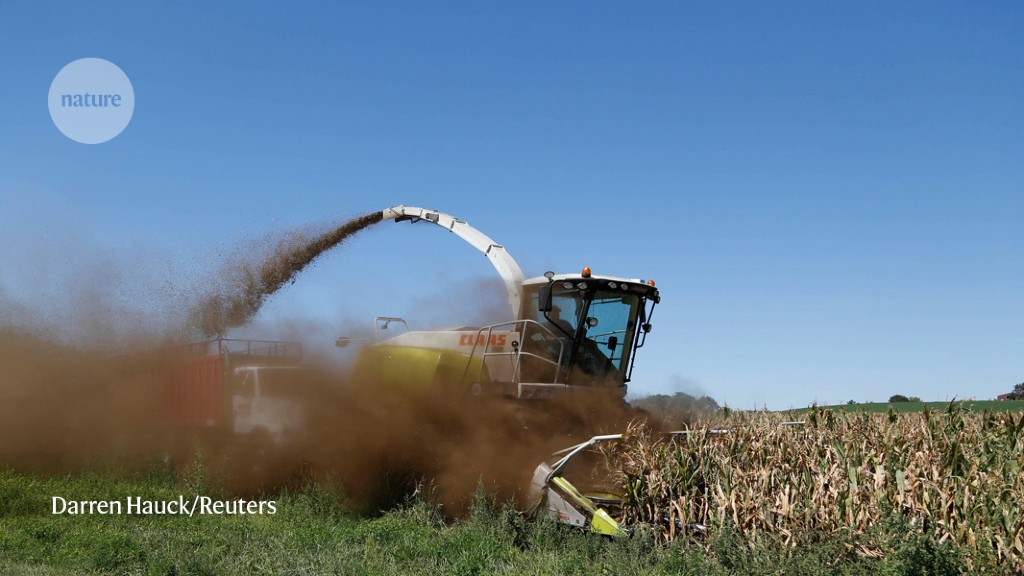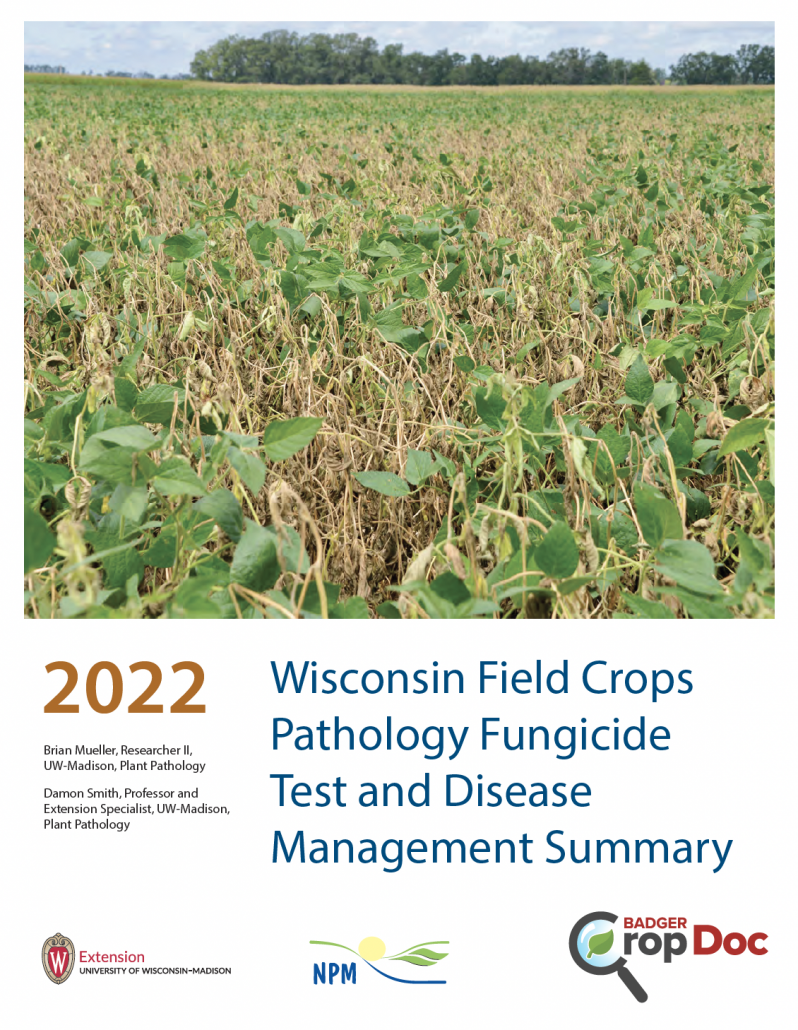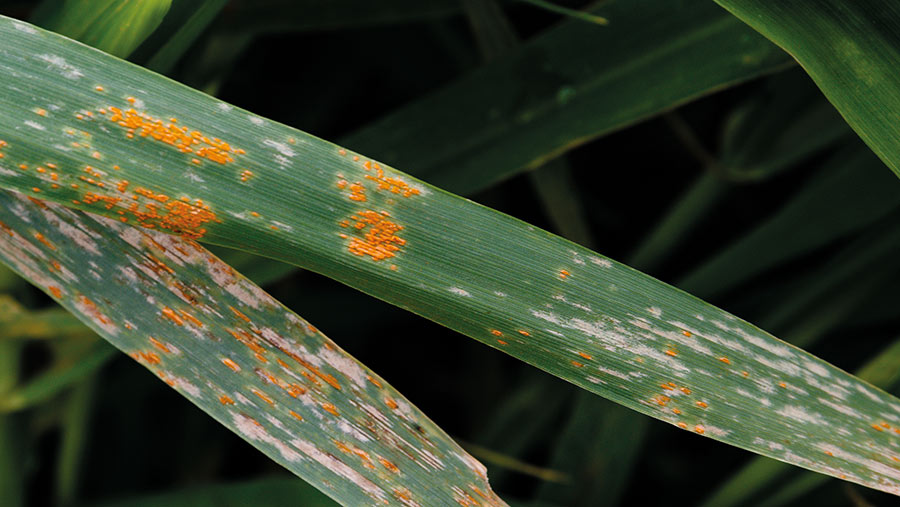07/06/2023 SOURCE: www.farmtalknews.com
We are entering the time window in Kansas where corn producers should be scouting fields and assessing the need for a foliar fungicide application. Several fields in eastern Kansas are
Fungicide considerations for corn diseases in 2023
-
(0)
-
Bookmark
- Comments. (0)
 Nancy Kavazanjian
Nancy Kavazanjian
Topics: Crop Diseases, Fungicides,
Address the growing urgency of fungal disease in crops
Nature - More political and public awareness of the plight of the world’s crops when it comes to fungal disease is crucial to stave off a major threat to global food security.
-
(0)
-
Bookmark
- Comments (0)
 Nancy Kavazanjian
Nancy Kavazanjian
Topics: Corn/Maize, Soybeans, Fungicides,
2022 Wisconsin Fungicide Test and Disease Management Summary Now Available! - Badger Crop Doc
Brian Mueller, Researcher II, UW-Madison, Plant Pathology Damon Smith, Associate Professor and Extension Specialist, UW-Madison, Plant Pathology Each year the Wisconsin Field Crops Pathology Program conducts a wide array of […]
-
(0)
-
Bookmark
- Comments (0)
01/06/2023 SOURCE: agairupdate.com
The Hawkeye State is dotted with dozens of aerial application operations, more so when the corn fungicide season is at its peak. Like many of these operations, Stott's Aerial Spray didn't appear from nowhere; it's a family-run operation that has been carried forward for generation ...
Slow Down to Speed Up | AgAir Update
-
(0)
-
Bookmark
- Comments. (0)
 Nancy Kavazanjian
Nancy Kavazanjian
Topics: Corn/Maize, Agriculture US, Fungicides,
Fungicide Efficacy on Tar Spot and Yield of Corn in the Midwestern United States | Plant Health Progress
Tar spot of corn caused by Phyllachora maydis has recently led to significant yield losses in the eastern corn belt of the Midwestern United States. Foliar fungicides containing quinone outside inhibitors (QoI), demethylation inhibitors (DMI), and succinate dehydrogenase inhibitors (SDHI) are commonly used to manage foliar diseases in corn. To mitigate the losses from tar spot, 13 foliar fungicides containing single or multiple modes of action (MOA/Fungicide Resistance Action Committee groups) were applied at their recommended rates in a single application at the standard VT/R1 (tassel/silk) growth stage timing to evaluate their efficacy against tar spot in a total of eight field trials in Illinois, Indiana, Michigan, and Wisconsin during 2019 and 2020. The single MOA fungicides included either a QoI or DMI. The dual MOA fungicides included a DMI with either a QoI or SDHI, and fungicides containing three MOAs included a QoI, DMI, and SDHI. Tar spot severity estimated as the percentage of leaf area covered by P. maydis stroma on the ear leaf of the nontreated control at dent growth stage ranged from 1.6 to 23.3% in the trials. Averaged across eight field trials all foliar fungicide treatments significantly reduced tar spot severity, but only Delaro 325SE (prothioconazole + trifloxystrobin), Revytek 3.33LC (mefentrifluconazole + pyraclostrobin + fluxapyroxad), and Veltyma 3.34S (mefentrifluconazole + pyraclostrobin) significantly increased yield over the nontreated control. When comparing groups of fungicide treatments by the number of MOAs, foliar fungicide products that had two or three MOAs decreased tar spot severity over not treating and products with one MOA. In addition, the fungicide group that contained all three MOAs significantly increased yield over not treating with a fungicide or using a single MOA group.
-
(1)
-
Bookmark
- Comments (0)
 John LaRose Jr.
John LaRose Jr.
Topics: Soybeans, Pesticides, Agriculture Global, Pest Control, Fungicides,
Soybean: Common Diseases & Insect, Pests and Its Management
Soybean is an annual plant that grows for only one season and can reach heights of 0.2–1.5 m. Soybean, also known as Soyabean or soya, is a plant native to Northeast China.
-
(0)
-
Bookmark
- Comments (0)
04/11/2022 SOURCE: www.fwi.co.uk
Winter oat growers could benefit from an earlier spring fungicide than usual as crops face a higher disease pressure, following a relatively mild winter.
Winter oats facing high disease could benefit from T0 spray - Farmers Weekly
-
(0)
-
Bookmark
- Comments. (0)
 John LaRose Jr.
John LaRose Jr.
Topics: Corn/Maize, Crop Consultant, Agriculture Global, Fungicides, Research,
Video: Dramatic visual evidence of the insect-resistant power of Bt maize, without chemical treatment
In clearing out my office recently I came across a DVD of the video Life in a standard and in Bt maize field that I had been given by Czech scientists in
-
(0)
-
Bookmark
- Comments (0)
 Nancy Kavazanjian
Nancy Kavazanjian
Topics: Agriculture US, Crop Diseases, Fungicides, Research,
2021 Wisconsin Fungicide Test and Disease Management Summary Now Available - Badger Crop Doc
Brian Mueller, Researcher II, UW-Madison, Plant Pathology Damon Smith, Associate Professor and Extension Specialist, UW-Madison, Plant Pathology Mimi Broeske, Distinguished Editor, UW-Madison, Nutrient and Pest Management Program Each year the Wisconsin Field Crops Pathology Program conducts a wide array of fungicide and disease management tests on alfalfa, corn, soybeans, and wheat. These tests help inform […]
-
(0)
-
Bookmark
- Comments (0)
 John LaRose Jr.
John LaRose Jr.
Topics: Sugarcane, Agriculture Global, Crop Diseases, Fungicides, Sugar, Plant Breeding,
Artificial intelligence accelerates search for markers of resistance to sugarcane yellow leaf disease
Yellow leaf disease, a major sugarcane pest in Brazil, is caused by a virus resistant to thermal treatment. An infected plantation can be saved only by growing plantlets in tissue culture in the laboratory ...
-
(0)
-
Bookmark
- Comments (0)










